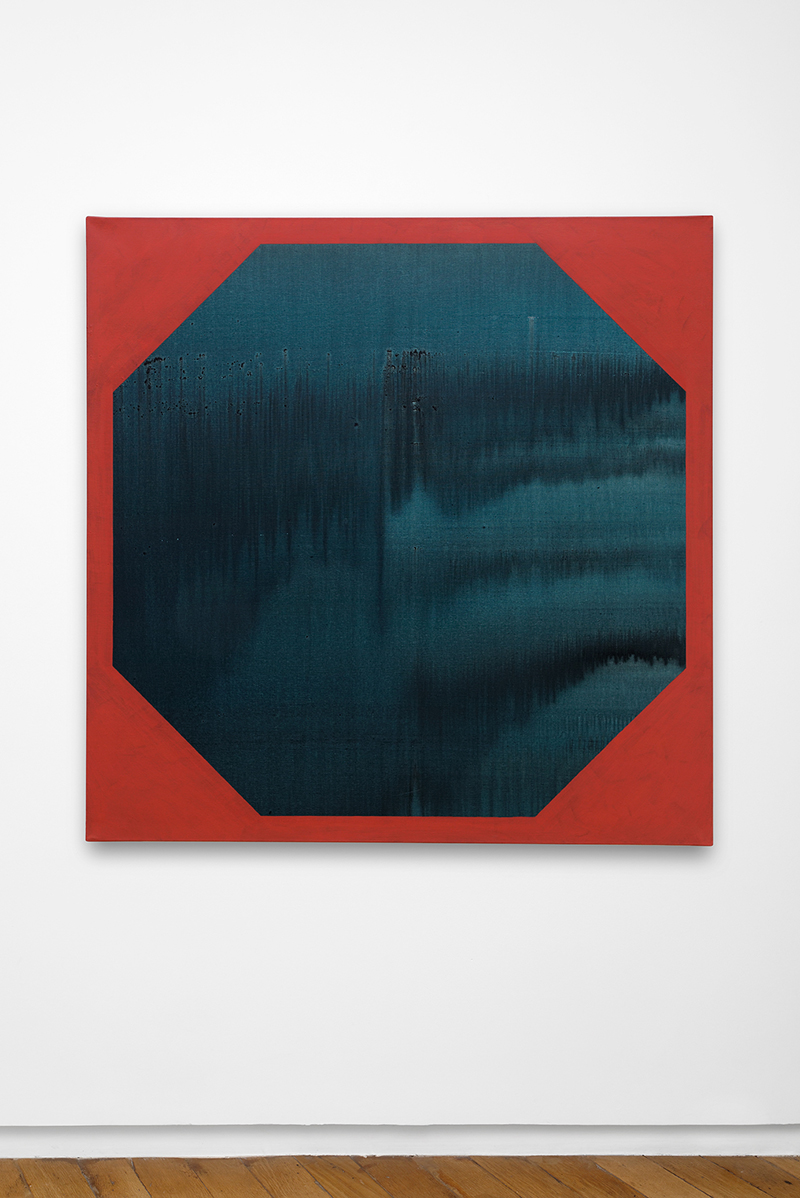Quod Apparet
— Emmanuel Van der Meulen
27th April, 2017 — 10th June, 2017Press release
(English below)
Quod Apparet
Le tableau est un fragment du monde mais ne le représente pas. Il le fait voir, à côté, devant, et même, comme dit Paul Klee, par la fenêtre. Lui, le tableau, n’ouvre sur rien, malgré les apparences. Mais la peinture n’est qu’apparence, art de la surface qui ne fait que laisser deviner la profondeur.
La nature de la peinture est peut-être davantage celle d’un miroir, le miroir de l’expérience, évidente et lacunaire, pleine et partielle, de voir. Et la pure visualité de la peinture s’accomplit non pas dans sa matérialité mais dans la disparition de ce en trop pourtant nécessaire et indispensable, minimum reconnaissable de gestes élémentaires de recouvrement, de décisions archivées par la toile, d’un certain travail de la peinture, sans quoi il n’y aurait rien à regarder.
C’est ainsi que par l’opération de soustraction de son labeur même, le tableau n’est pas seulement un agencement plus ou moins grand de matière et de formes ou un objet de plus. Le paradoxe est que la plénitude du tableau, la fulgurance ou l’humilité de son apparition, son objectivité matériel et son unité, soient la condition de ce retrait. Et ces deux événements contradictoires ont lieu en même temps.
Mais que montre la peinture ? Ce qui apparaît, parfois, quand ce qui est peint s’efface mentalement pour laisser voir en quelque point aveugle, comme on laisse entendre, l’arrière-plan jamais vu. Dans ce mouvement, le regard revient sur ses pas, en-deça des formes, comme à son point de départ, où les choses sont comprises, sous-entendues et incluses, dans une compréhension plus générale, non-imagée, du monde et de l’existence – esprit qui voit sans voir, aussi bien que s’il voyait.
Mais, arrivé là, cet esprit, ou plutôt, ici, l’imagination, en ce qu’elle crée des images, vraies ou fausses, peu importe, n’informe plus le regard. Elle ne remplit pas les vides dirait Simone Weil. Le regard, lui, s’est retiré, laissant un rivage désolé, une pensée en suspens, retenue au loin, à son propre horizon et qui fait signe de la main.
Le regard est éthique ou n’est pas. La distance imposée par l’objet qu’est donc malgré tout le tableau, et l’autorité formelle de cette distance, interdisent la fusion, le fantasme de ne faire qu’un. Le plan du tableau indique même une manière de limite et se tient à un curieux point d’équilibre entre l’indifférence et l’engloutissement, la verticalité et le vertige, l’esprit de décision et l’aléa, l’arrière et l’avant, la figure et le paysage. C’est l’impossible osmose, malgré l’archaïsme du faire, des traces du pinceau aux flaques de peinture, qui permet l’intelligibilité de cet étrange dispositif : un miroir opaque qui n’en finit pas de réfléchir notre présence devant lui. Et même, en effet, à ce stade, on se demande si ce n'est pas le tableau qui nous regarde et non pas le contraire. Et dans ce retournement s’énonce quelque chose comme une affirmation métaphysique remarquable, et c’est peut-être notre raison d’être là.
Il faut dire que l’échec du tableau à représenter quoi que ce soit est une heureuse défaite qui donne tous pouvoirs à la vie.
La peinture ne laisse qu’une trace paradoxale, comme un témoignage qui n’aurait pas dû être car ce dont il rend compte par anticipation est impossible : l’acte de voir qui se perd dans son propre mouvement et, par là même apparaît à ses propres yeux, lesquels ne sont pas « les yeux du corps » (Plotin) mais, pour nous, les conditions mêmes de la visibilité.
Il faut dire encore que le tableau est un équivalent du monde mais ne prend pas sa place. Au contraire, le travail de la peinture est aussi cette quête de l’unité de ce qui se donne à voir au prise avec son propre mouvement d’autodestruction qui nous emporte dans le divers et l’inattention. Et si le projet de la peinture était d’apprendre à regarder ? La peinture nous enjoint donc de revenir à elle, comme à une source, avant de tourner les yeux vers le dedans, puis vers le monde.
Car il n’y a pas rien puis soudain quelque chose. Le monde est déjà là. Le tableau qui commence est plein de ce monde cohérent et puissant, c’est-à-dire, pour nous, en attendant d’y trouver une place, chaotique et néanmoins un comme une toile vierge. Mais tout tableau a sa genèse et ce n’est qu’après-coup, après s’être risqué entre deux eaux, dans le vertige et l’abandon de l’indéterminé, qu’il peut advenir malgré tout, comme souvenir de ce passage, monument de ce qui a eu lieu.
— Emmanuel Van der Meulen
- - -
Quod Apparet
A painting is a fragment of the world but does not represent it. The world being shown next to, in front of, and even, as Paul Klee said, by the window. A painting opens into nothing, despite appearances. However, painting is nothing but appearance, an art of surface whose depth can only be guessed at.
The nature of painting is perhaps closer to that of the mirror, the mirror of experience, evident and incomplete, full and partial, to see. And the pure visuality of painting is achieved not in its materiality but in the disappearance of this excess, however necessary and indispensable, a recognisable minimum of elementary covering gestures, decisions archived by the canvas, a particular working of the paint, without which there would be nothing to see.
This is how, through the operation of subtracting its own labour, a painting is not just an arrangement, to a greater or lesser scale, of materials and forms, or simply another object. The paradox is that the plenitude of a painting, the blaze or the humility of its appearance, its material objectivity and its unity, are the conditions of this retreat. These two contradictory events take place at the same time.
What then does a painting show? What appears, sometimes, is that which is painted in the process of mentally erasing itself, allowing the background, the never-seeable, to be seen — or to be heard. In this movement, the gaze retraces itself, sitting below form, like at its departure point, where things are understood, implied and included, in a more general sense of non-imaged understanding, about the world and existence — the spirit of that which sees without seeing, as well as if it were seeing.
However, having arrived here, this spirit, or the imagination — in terms of that which creates images, never-minding if they are true or false — no longer informs sight. It does not fill the void, as Simone Weil would say. The gaze, in retreat, leaving a sorry shoreline, a thought in suspense, retained far away, waves from its own horizon line.
The gaze exists as ethical or not at all. The distance imposed by the object, that nonetheless a painting is, and the formal authority of this distance, forbids the fusion, and the fantasy of being one. Even the edges of the canvas indicate this means of limitation and hold themselves in a particular balance between indifference and engulfment, verticality and vertigo, decision and chance, behind and in front, figure and landscape. It is an impossible osmosis, despite the archaism of making, between the traces of the paintbrush and the pools of paint that allow for the intelligibility of this strange apparatus : the opaque mirror that never stops reflecting our presence before it. And even then, at this point, we ask if it isn’t the canvas that looks upon us rather than the other way around. This diversion signals something of a remarkable metaphysical affirmation, and it is perhaps our reason for being here.
It should be noted that the failure of painting to represent anything is a happy defeat that gives all power to life.
Painting leaves only a paradoxical trace, like a witness who ought not to have been because that which is recounted in anticipation is an impossibility: the act of seeing loses itself in its own movement and, in the same action, appears before its own eyes, which are not “the eyes of the body” (Plotinus) but rather, for us, are the very conditions of visibility.
It should also be said that painting is an equivalent of the world but does not take its place. Rather, the work of painting is also this quest for unity in what is shown during its movement through self-destruction, taking us into the daze of infinite variation and inattention. And what if the project of painting was to teach us how to look? Painting directs us to return to it, like a source, before turning our eyes inwards, then back out towards the world.
Because there is not nothing then suddenly something. The world is already here. At its start, a painting is full of this coherent and powerful world, that is to say, for us, while awaiting a place within it, chaotic but whole nonetheless, like a blank canvas. All painting, however, has its genesis but this is only after-the-event, after risking being stranded, in the vertigo and the abandon of the indeterminate, and it may emerge as a memory of this passage and a monument to that which has taken place.
— Emmanuel Van der Meulen
Translated by Alexandra Pedley
Quod Apparet
27th April, 2017 — 10th June, 2017 , Galerie Allen
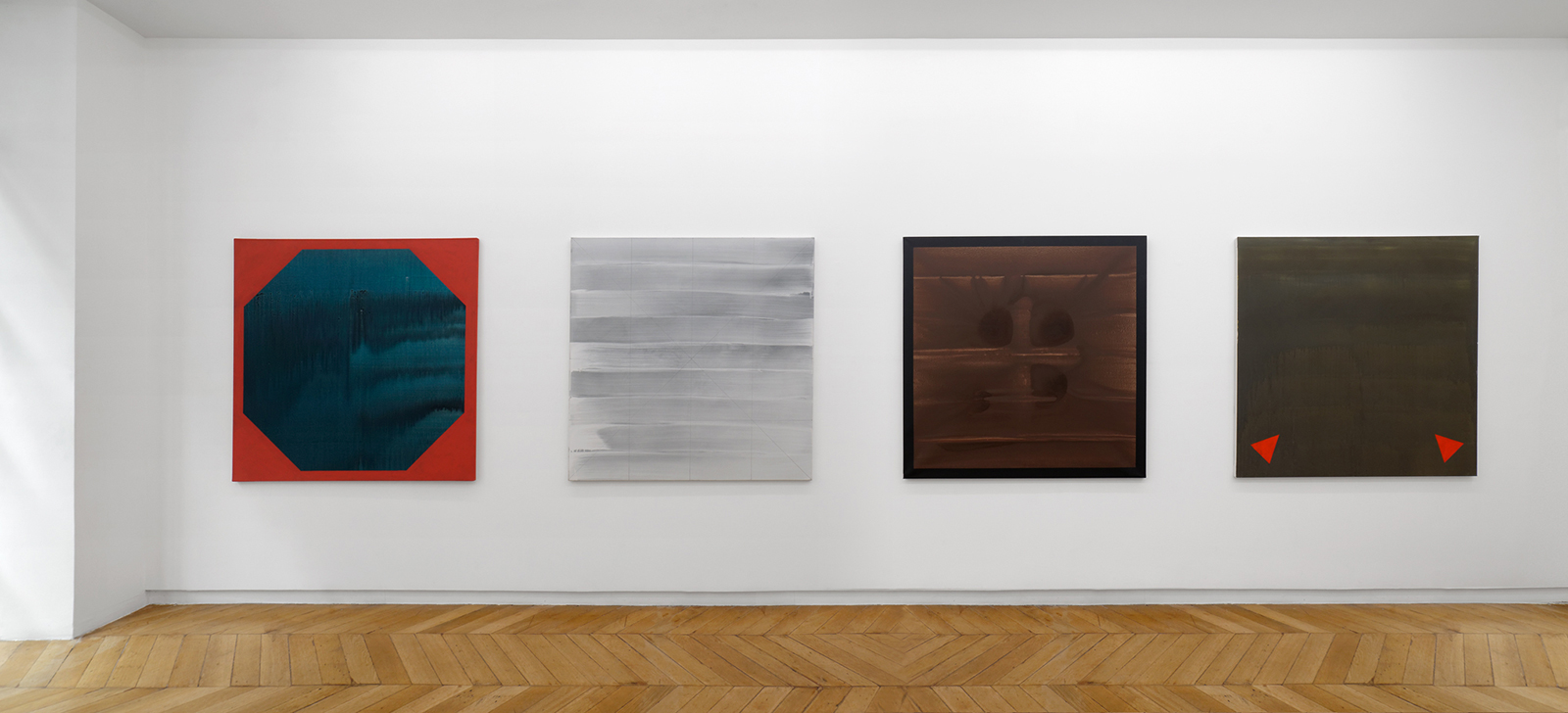
Bethel, 2016
Acrylic on canvas
130 x 130 cm
Photo: Aurélien Mole
Courtesy the artist and Galerie Allen, Paris
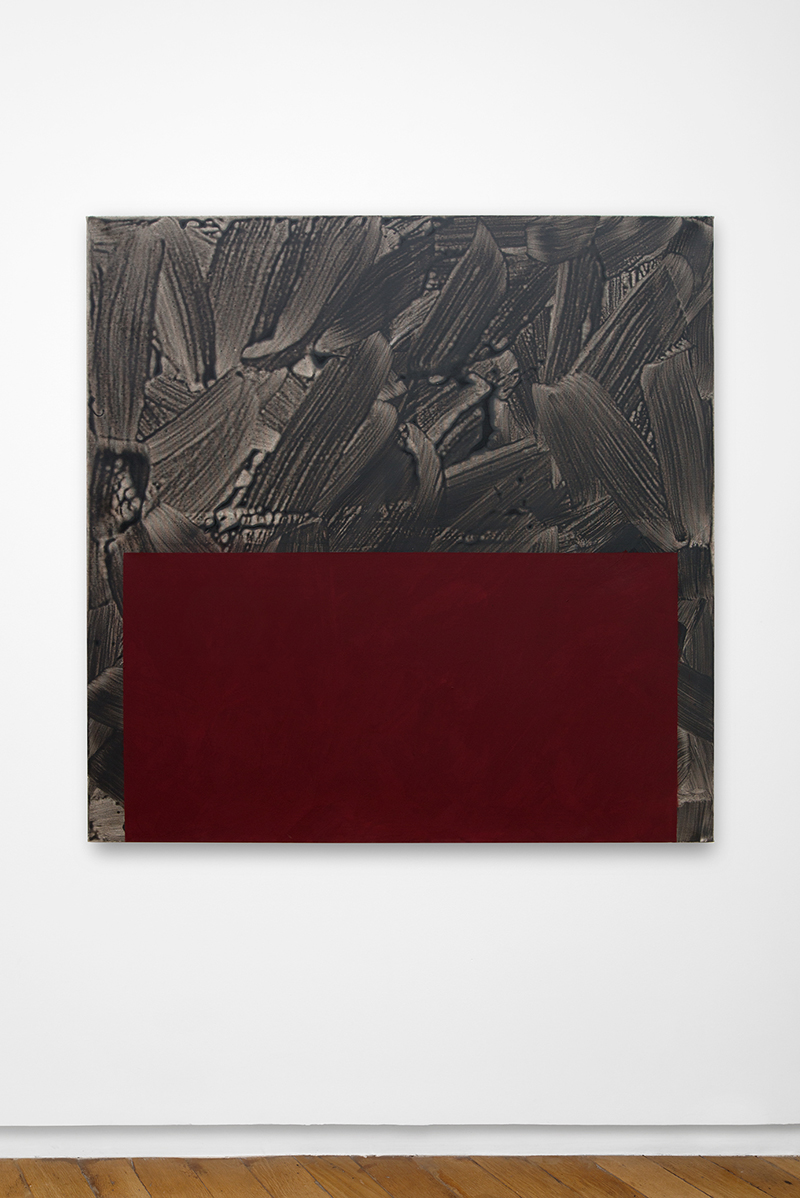
Agam, 2016
Acrylic on canvas
130 x 130 cm
Photo: Aurélien Mole
Courtesy the artist and Galerie Allen, Paris
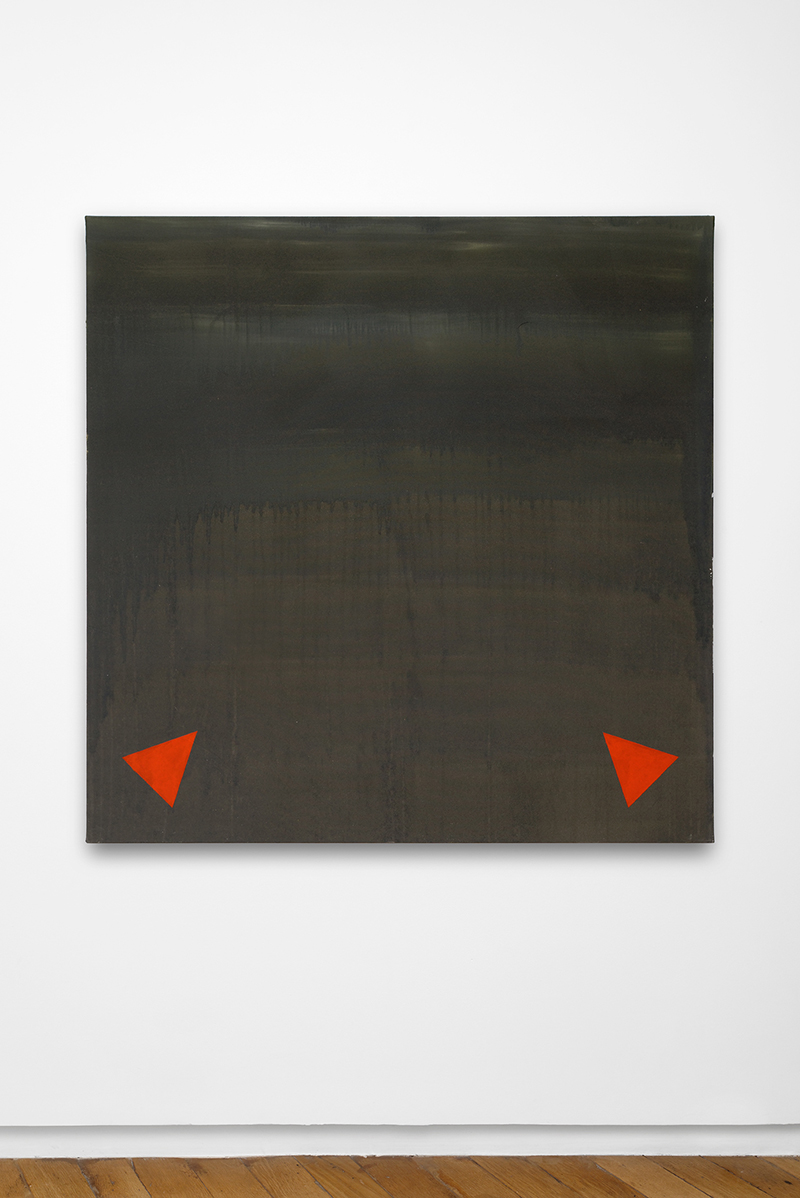
Éďkon, 2017
Acrylic on canvas
130 x 130 cm
Photo: Aurélien Mole
Courtesy the artist and Galerie Allen, Paris
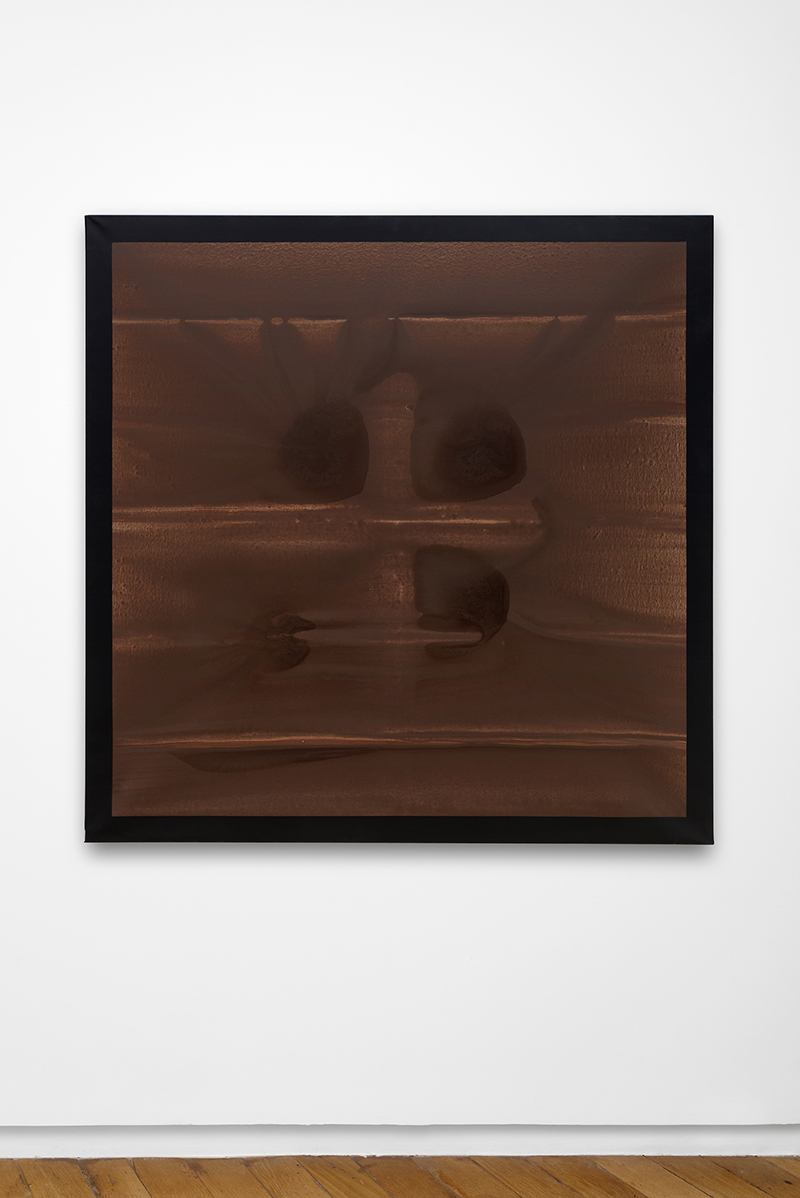
Archč, 2016
Acrylic on canvas
130 x 130 cm
Photo: Aurélien Mole
Courtesy the artist and Galerie Allen, Paris
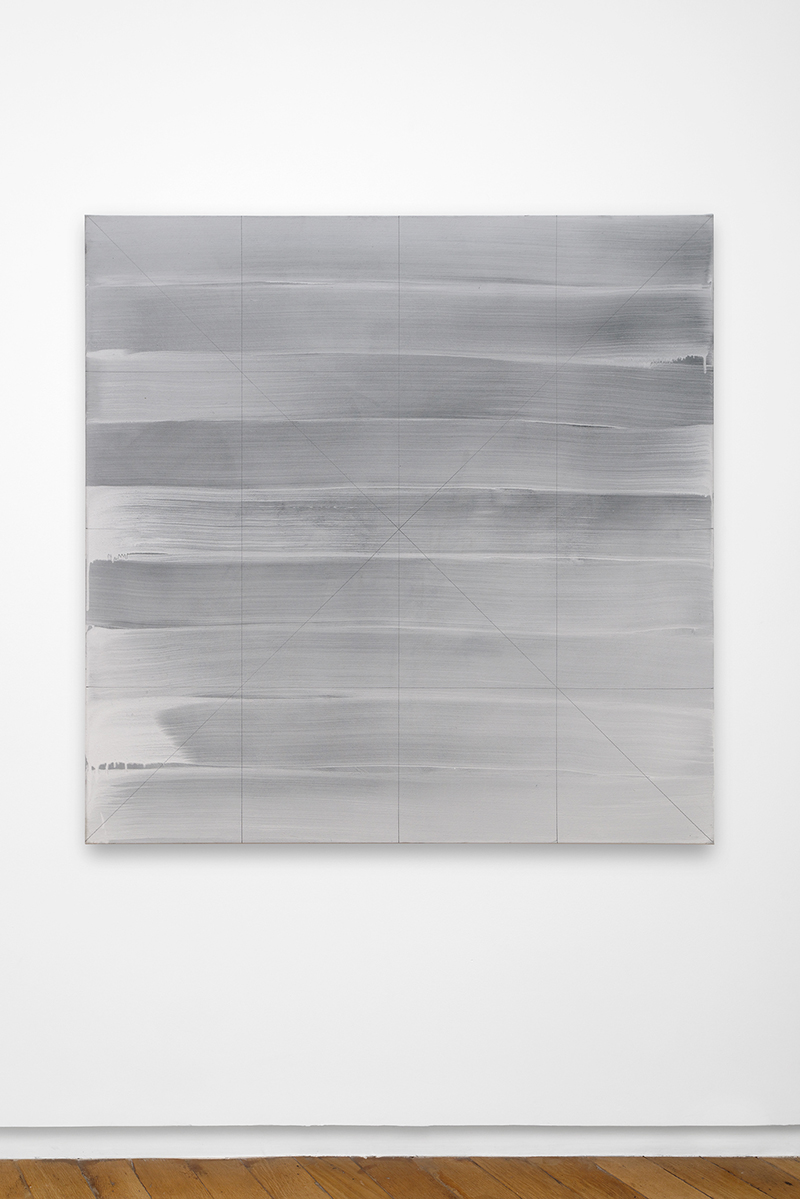
Quadrum, 2017
Acrylic on canvas
130 x 130 cm
Photo: Aurélien Mole
Courtesy the artist and Galerie Allen, Paris
